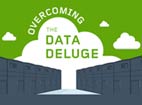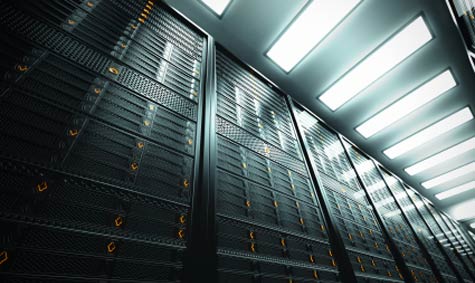Everyone wants a more efficient data center, if only for the cost-savings and not the greater environmental good. The problem is that many legacy centers are so loaded with aging equipment and out-of-date systems architectures that it’s easier to just leave things as they are and plan for greater efficiency in the next Greenfield deployment. The trouble with this thinking is that it is almost always cheaper to simply add on to what you have, so new facilities never get beyond the planning stage while legacy infrastructure becomes even harder to retrofit.
According to a recent survey by IDC, the average data center of at least 100 servers eats up about 24 percent of the total operating budget on power and cooling. This represents about $300,000 per year and is about equal to the average capital budget. As well, the company reports that a quarter of large and midsize businesses will face such significant power and cooling costs in the next few years that they will be forced to use only about 75 percent of their data center space.
The truly sad part in all of this is that with even moderate changes to infrastructure and facilities, organizations could see data center energy reductions on the order of 1 million kWh per year, according to Future Resource Engineering. A good program always starts with a careful evaluation of how things are and how they can be improved. For the data center, this should encompass not only hardware and software improvements, but available incentives and payback options as well. The reality is that the government, the utility industry and various environmental groups offer a range of programs and accreditations to help large energy consumers like IT cut the power bill.
As Data Center Knowledge points out, no power efficiency plan would be complete without a healthy dose of consolidation. But as Bill Kleyman notes, simply porting workloads to virtual machines on a single server is only the beginning. Software management stacks will also need to be optimized for newly consolidated resources by offering improved visibility into data and facilities infrastructure, as well as the workload distribution. In today’s dynamic data environment, sometimes it is more efficient to spread jobs over two or more servers than to load up a single machine. And while the overriding goal is to cut energy usage, the enterprise should take care to ensure that this does not come at the expense of the user experience or data productivity.
And while most efficiency plans incorporate advanced virtual constructs, data management and software-defined X, real gains can be had in basic improvements as well. In the case of, say, poor cooling efficiency, it often comes down to something as simple as the kind of fan in your CRAC unit, says James Cooper, of European industrial cooling specialist ebm-papst. In recent years, a number of new developments have hit the market promising greater return on the cooling investment. These include electronically commutated (EC), backward curved fans to replace the belt-driven, forward curved designs of the past, plus the addition of DC/AC power options and variable speed control to increase or decrease air flow during peak and off-peak hours. In some cases, a simple fan swap can cut costs in half.
It has long been a rule of thumb in the business world that in order to make money, you have to spend money. In today’s environment, however, we need to tweak that a bit to say, in order to save money, you have to spend money.
Greater resource efficiency is one of the key ways in which successful companies will edge out the legacy players in the emerging digital economy. The newcomers have the luxury of building or leasing efficient infrastructure from scratch, but they usually do not have the financial resources to implement big infrastructure right away.
Established firms are stuck with legacy infrastructure, but they have the ability to retrofit their systems for the new era. But this is one area in which a proactive approach is vital, as a reactive program spurred by more energy efficient competition will likely be too late.
Arthur Cole writes about infrastructure for IT Business Edge. Cole has been covering the high-tech media and computing industries for more than 20 years, having served as editor of TV Technology, Video Technology News, Internet News and Multimedia Weekly. His contributions have appeared in Communications Today and Enterprise Networking Planet and as web content for numerous high-tech clients like TwinStrata and Carpathia. Follow Art on Twitter @acole602.




